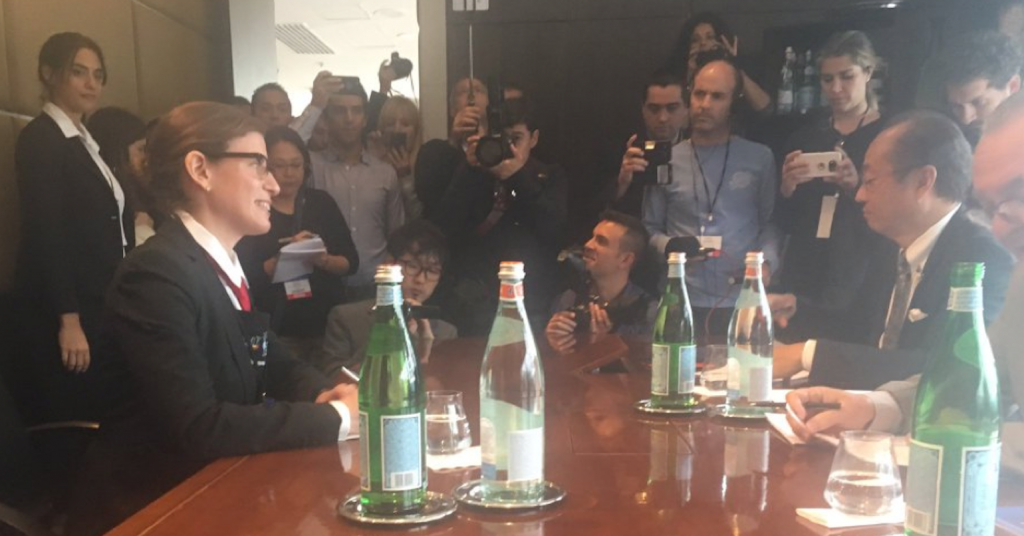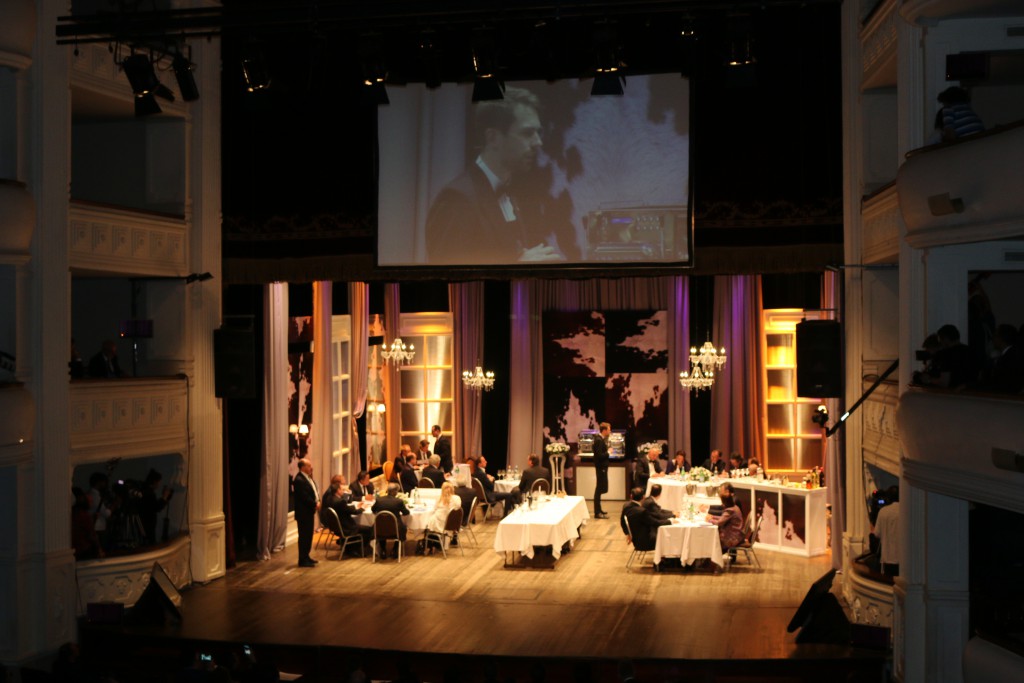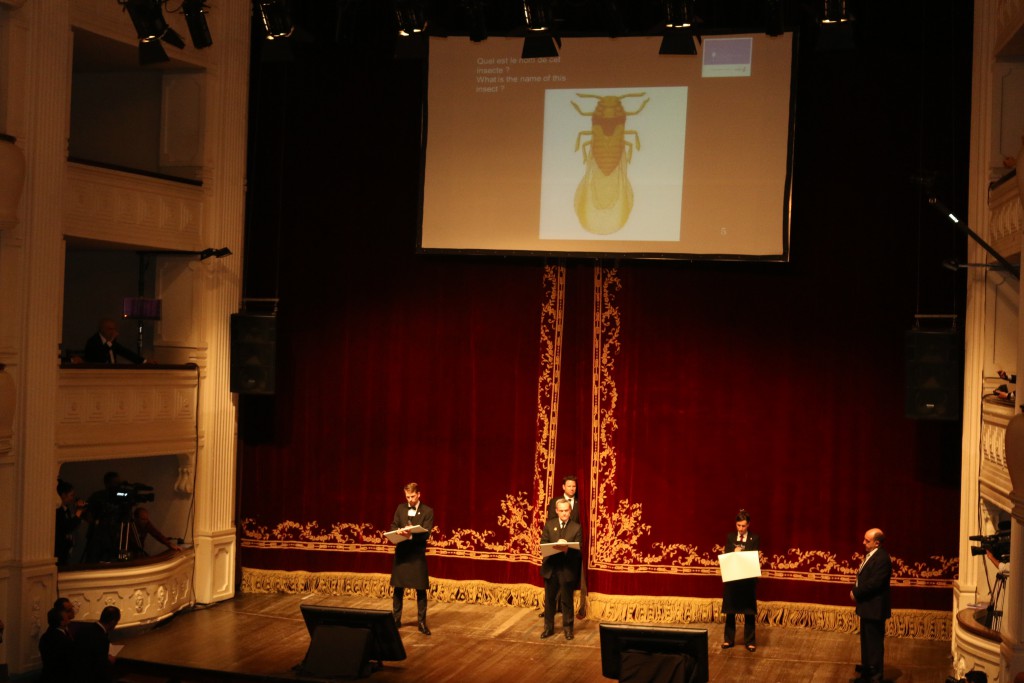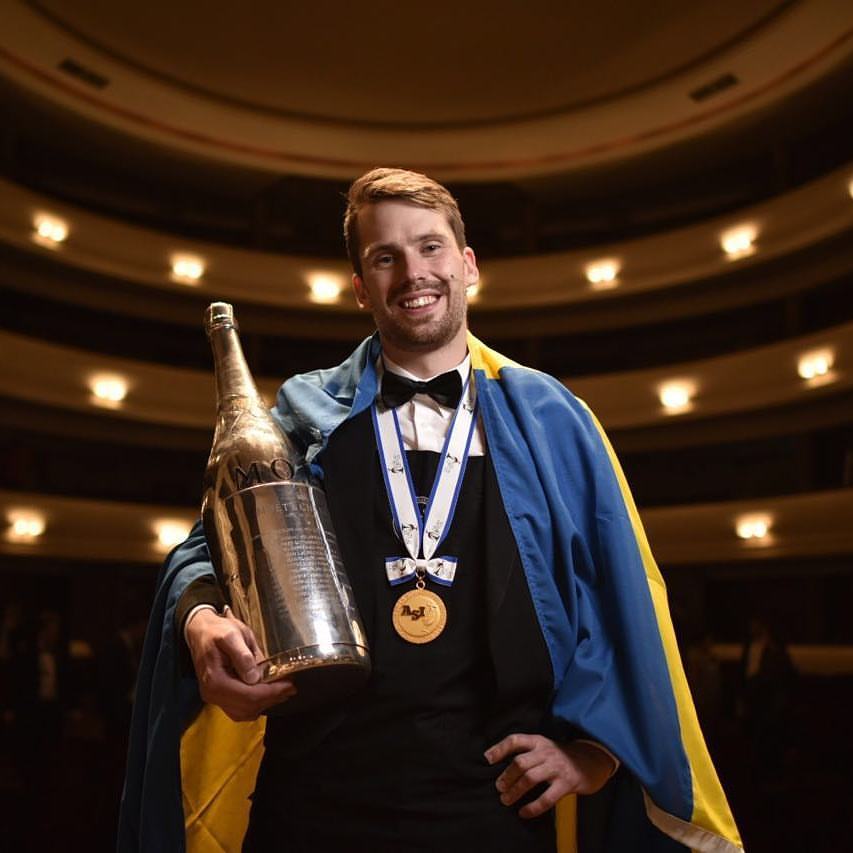Want to know exactly how gruelling the competition is to become the World’s Best Sommelier? Or what makes the finalists break a sweat in front of the audience? Last week, and mid-harvest, the Best Sommelier of the World competition came into Mendoza, Argentina, and we went behind the scenes to dig all dirt on the most prestigious sommelier event in the world. Join us as we peek behind the curtain and blow the smoke away from this enigmatic championship.
Some 500 people poured into Argentina’s wine capital, Mendoza, last week to witness and participate in the elite battle of the world’s top Somms. With only 14, and now 15, title holders for Best Sommelier of the World, this is the most elite accolade in the lifetime of a Somm.
The 15th edition of the Best Sommelier of the World competition was the biggest yet with 61 candidates ready to battle it out. As the ASI (Association de la Sommellerie Internationale) celebrates a new growth spurt with 58 member countries, the Best Sommelier of each country was invited to participate alongside the three international title holders: Best Sommelier Europe (Arvid Rosengren), Best Sommelier Americas (Paz Levinson), and Best Sommelier Asia-Oceania (Hiroshi Ishida).
As the crème de la crème of the sommelier world arrived (each with their own entourage of coaches, fans and family) the Argentine Sommelier Association greeted them with a packed agenda of winery visits, parties, tastings, countless Argentine asados (BBQs) and, of course, the main competition.
While bubbles flowed at the opening cocktail party on Friday, the only event on any candidate’s mind was the first set of tests the following morning at 8am. The only instruction given beforehand was the time. “They never know what form the competition will take,” explains former Best Sommelier Chile, and Technical Committee member, Ricardo Grellet. “They know there are three elements – service, tasting and theory – but they don’t know in what order.”
Early the next morning, the candidates were greeted with a blind tasting of 2 wines and 4 spirits, a theory exam and a practical test of serving Champagne, all under the eye of the judging panel and spectating press.

No pressure… Candidates sit their early morning theory exam under the eye of the press
Premeditated traps laid by the judges included a small speck on a Champagne glass, and taxing questions such as listing from memory Germany’s wine regions by size, in reverse order.
The first round of tests lasted some five hours and would determine their fate in reaching the semi-finals. That evening, the semi finalists were announced and for the first time in history, there were 15 and not 12.

Candidates await the announcement of semi finalists. The bubbly helps the nerves.
“There were a lot of people coming here and we wanted more people to have the chance to be in the semi-final,” explained ASI President and Best Sommelier of the World 1995 Shinya Tasaki.
The semi-finalists appeared to have a strong Northern-European leaning with candidates Christian Jacobson from Denmark, Heidi Makinen from Finland, Henrik Dalh Johansen from Norway, Raimonds Tomsons from Latvia, Robert Andersson from Sweden, and favourite Arvid Rosengren from Sweden. Other favourites to make it through were Hiroshi Ishida from Japan, David Biraud from France, and Paz Levinson from Argentina. Previous continental winners Satoru Mori from Japan and Elyse Lambert from Canada made it to the cut, joined by first-time semi-finalists Piotr Pietras from Poland, Rassavkin Alexander from Russia, Gareth Ferreira from South Africa and Julie Dupouys from Ireland.

The semi-finalists
In a heavily male-dominated competition (57 men compared to 4 women), it was a celebrated victory for all four women to make it through to the semi-finals.
The Moet was flowing but celebrations were short-lived as the semi-finalists had to prepare for their next, and more demanding, round of 10 tests early the following morning.
A rigorous four hour examination period saw more written theory, blind tasting, menu and pairing tasks, and the somms had to face some wearying customers in a practical assessment. Sunday morning’s exams were particularly exhausting as it was the second day on the trot, and candidates had to perform with the clicking of cameras all around them – especially Argentine candidate Paz Levinson, who was easily the most papped of them all.

Paz Levinson faces the judges and the paparazzi from her home country
Dealing with the pressure and putting on a convincing smile is what candidate Hiroshi Ishida believes makes this the top sommelier competition: “The content is really interesting; it is exactly oriented to the sommelier profession. If it was just tasting and knowledge – what is the difference to another wine professional? The contest has to include proposals to the client, even if the client is difficult.”
After all 15 competed the first exams, the judges and technical committee kept schtum until the finalists were announced on Tuesday.
Monday was a welcome day off for the candidates as they and a 400-strong entourage of attendees spent the day winery hopping in Uco Valley. Three wineries, two barbecues and lots of wine later, it was the last night’s sleep before the big final on Tuesday.

And Rutini went for chivito.

Catena Zapata cooked up some suckling pig…

Zuccardi went for good old fashioned beef…
At 3.30pm, a crowd of over 500 attendees packed out the Teatro Independencia in Mendoza city centre where the competition would be live streamed and broadcast on television with overflow screenings in the Hyatt next door.
If you were wondering how they make pouring wine a spectator’s event, try announcing the three finalists just five minutes before they compete. The adrenaline didn’t drop as the number of candidates went from 15 to 3, with a palpable echo of heartbreak in the room.
A dark horse in the competition Julie Dupouys (originally from France but representing Ireland) made it into the finals along with two favourites from the outset: David Biraud from France, and Arvid Rosengren from Sweden.
Within minutes the competition began, and after a draw of numbers, Arvid was first on stage as the theatre curtain lifted to reveal a mock restaurant with 23 judges scoping out the competitors as they were given tasks to perform in front of a live audience.

Arvid takes the stage first in front of a big theatre audience
A series of 12 tests, lasting roughly 45 minutes, lay ahead for each candidate. To start with? A table of judges ordered a classic Martini cocktail and a bottle of Champagne that wasn’t available. Part of the challenge is to spot the ruse and offer the best alternative.
Each of the exams on stage tested each sommelier in their wine and drinks knowledge, ability to keep cool and make the client feel good during service, and blind taste and identify wines and spirits. This is not the easiest when you have an audience of 500 watching in the wings.
It soon became a fun spectator sport as each audience member learned more about the blind wines served as the competition progressed, and could compare and mentally score each performance compared to the previous one.
The most impressive show was surely as each sommelier spontaneously waxed lyrical about pairing a series of cult wines for a special menu of their creation. The most gut-wrenching moments were the rapid technical rounds of blind tasting and the final task to identify mistakes in a wine list in under 30 seconds.
“It is very tough,” said French candidate David Biraud between rounds. “To become the best sommelier is not easy and you have to deal with the pressure.”
After over two hours of individual performances, the three came back to the stage for two tasks together, battling it out face to face. The first task was a 15 second recognition round to write down the names of the faces and places that appeared on the screen – chateaux, winemakers and vine diseases flashed up on the boards as some candidates nailed it and others struggled to place the faces. Imagine a sober, high-pressure pub quiz in front of a well-suited black tie audience.

Can you guess what it is yet?
The final task aroused deep Oohs and Aahs from the spectators as a stage of three tables with dozens of glasses was revealed, and each candidate was told to serve a magnum of Champagne equally into 15 glasses without any re-pours and to empty the bottle. The tension could have been cut through with a knife as the candidates literally raced side by side for a painstaking 7 minutes pouring pink bubbly. After the task was over, the candidates got to take a well-deserved swig of Champers and take a seat for the big announcement.

Pouring 15 glasses of champers in equal measure
In a bid to break the tension and to buy some time for the judges to finish scoring the performances, the Argentine hosts had arranged a special tango display on stage. And then finally, it was time for the Best Sommelier of the World to be announced…
ASI President Shinya Tasaki opened the last white envelope of the competition to announce the new Best Sommelier of the World: the young Swede, Arvid Rosengren.

The winner and Best Sommelier of the World 2016
“It feels great,” the 31-year-old sommelier enthused after winning. “They were really tough finals, and I wasn’t expecting to win!” The excitement was also met with great relief:
Arvid marks a shift from the previous winners. He works in a hip restaurant in Soho New York where they serve old wines accompanied by loud hip hop. What does this victory mean for the future generation of sommeliers? “You don’t have to be stiff to be a sommelier, and I think it is good for the new generation and important to show the world that sommeliers can be different.”
After a well-deserved drink, and more steak dinner, for all the organisers and candidates, the order of the top 40 was announced after midnight by Best Sommelier of the World 2010 Gerard Basset. Frenchman David Biraud had taken second place, Julie Dupouy third, and out of the semi-finalists in fourth was Paz Levinson, and in fifth Elyse Lambert.
An impressive three women had made it to the top five, but for now the World’s Best Sommeliers remains an all-gents club – at least until the next games begin in 2019.
This year also marked an emerging trend as Arvid was the second Swede to win the accolade, and many of the Nordic countries had made it to the semi-finals. As important wine consumers with disposable income to travel and taste more wines, will the Nordic countries ever give France a run for their money when it comes to producing the best sommeliers in the world? I’ll leave that to Best Sommelier in the World 2007 Andreas Larsson to respond:
Training for the Olympics
For years leading up to the competition, candidates go under brutal training with few hours sleep, many hours studying, and spending a minor fortune in practicing tasting with expensive wines and spirits from around the globe. How long they decide to dedicate their life to the world championships depends on how quickly they can win it, or how quickly they give up.
“I prepared really hard for my first time in 2013,” says Arvid Rosengren, who became Best Sommelier of the World 2016 on his second attempt in the global competition. “I went in with the mindset that I wanted to get in and get out! I didn’t want to spend 20 years until I won. It takes up so much of your free time and effort. I don’t remember the last time I sat down to read a book (not about wine) without feeling guilty, or watched a movie without being on an aeroplane.” Although you might have intentions to win first time round, hardly anyone is first time lucky when it comes to the Best Sommelier of the World competition.
As a competition that is only held every three years, with only 15 champions to date, this is a test of endurance and long-term sacrifice. “Throughout my seven years competing I didn’t have a family or social life,” remembers Andreas Larsson, Best Sommelier of the World 2007.
Paolo Basso, Best Sommelier of the World 2013, was more than aware that after 18 years of training, his wife was becoming a sommelier widow. “For the last competition, after being 2nd three times, I had to ask my wife permission if I could participate again.” Lucky for him she said yes, and lucky for her it was the last time he needed to ask.
The lost family time and unfeasible task of training while being a mother is what most female sommeliers list as their main reason why they leave the competition. To this date no woman has ever joined the ranks of Best Sommelier in the World. The list is compiled of men, who all cite a rigorous and exhausting training period.
Best Sommelier of the World in 1989, Serge Dubs, trained himself to become used to insomnia in order to fit in all the required study time. “For the year leading up to the competition I only had 4 hours’ sleep a day… The last few months, I learnt how to sleep for just one minute or two minutes at the time, when I was between meetings or at the traffic light. During the competition I was awake for 24 hours.”
This year’s candidates were no less extreme, with many of them taking themselves away from the distractions of loved ones or work for months leading up to the competition. However there is also a common thread in the latest winners, which is a more holistic approach. “I have been training for years, so it was just a case of catching up – I would wake up each morning and meditate, and then read up on everything that has been happening,” comments last week’s recent winner Arvid. “I was blind tasting every day and I work intensely in a restaurant, so that helps too. But this year, I focused on being more balanced.” And it seems to have paid off.


2 comments
Hello Amanda! I think this piece is the best report about Best Sommelier of the World 2016 I have read so far.
Thank you Angel!